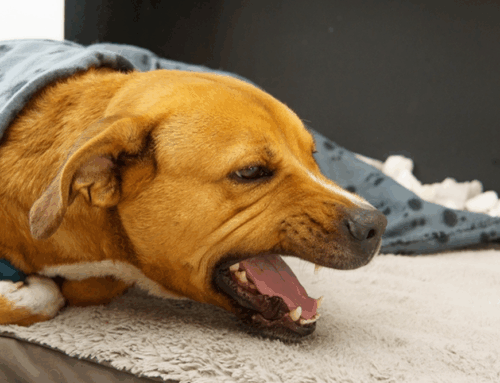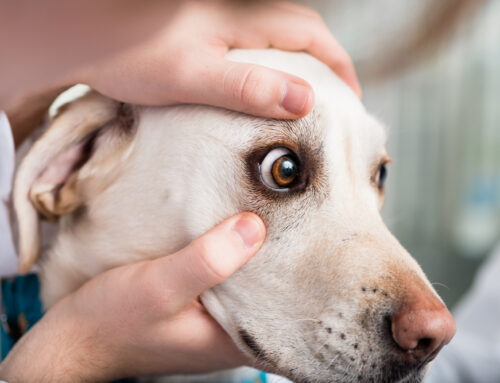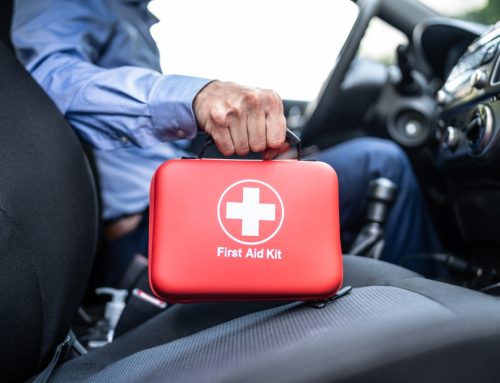Upper respiratory infections (URIs) affect the nose, sinuses, mouth, and throat and are common in cats. They can be caused by numerous pathogens, but infection typically occurs through direct contact with an infected cat or by environmental exposure to objects contaminated with infectious nasal, oral, or ocular secretions. Our Southern Arizona Veterinary Specialty and Emergency Center team wants to help protect your cat from infectious agents that cause URIs, and we offer information about several common URI pathogens in cats.
What cat owners should know about feline herpes virus
Commonly called feline viral rhinotracheitis (FVR), herpes infection most commonly affects kittens and adolescent cats. Up to 97% of cats are exposed to the virus in their lifetime, and 80% of exposed cats will have a lifelong infection. Other important information includes:
- Clinical signs — FVR signs include respiratory signs, such as ocular and nasal discharge, coughing, and sneezing, as well as conjunctivitis, corneal ulcers, and fever.
- Treatment — Supportive care, such as adequate hydration and nutrition, is important to help the cat’s immune system fight the infection. In some cases, nasal decongestants may be beneficial, and systemic antibiotics are sometimes needed to address secondary bacterial infections. In severe keratitis or conjunctivitis cases, antiviral ophthalmic medications may be recommended.
- Prognosis — Once infected, most cats carry the infection for life, with periodic flare ups, especially during stressful times. Most episodes are mild, but more significant illness can occur in cats who have coexisting health problems.
- Prevention — FVR is considered a core vaccine for all cats. The vaccine doesn’t always prevent the disease, but will significantly reduce disease severity and viral shed. Keeping your cat indoors also helps protect them from infection.
What cat owners should know about feline calicivirus
Feline calicivirus is a highly contagious disease that is extremely common in cats housed in crowded conditions. Other relevant information includes:
- Clinical signs — Signs include respiratory symptoms and oral and nasal ulcerations. In rare cases, systemic infection can cause head and limb swelling, crusting sores on the nose, ears, eyes, and footpads, liver damage, and gastrointestinal bleeding. This rare form is fatal in about two-thirds of affected cats.
- Treatment — In addition to supportive care, medications may be prescribed to relieve the pain associated with oral ulceration, and break down respiratory mucus. Antibiotics may also be necessary to combat secondary bacterial infections. An affected cat who refuses to eat may need a nasogastric feeding tube until their oral lesions heal.
- Prognosis — Most affected cats recover in a few days or weeks.
- Prevention — Feline calicivirus is considered a core vaccine for all cats. The vaccine is not 100% effective, but significantly reduces the likelihood of severe disease. Keeping your cat indoors can also reduce their risk.
What cat owners should know about feline chlamydiosis

Feline chlamydiosis is a bacterial infection caused by Chlamydia felis. The pathogen can’t live outside the host’s body, and requires close contact with an infected cat’s eye secretions for transmission. Other important information includes:
- Clinical signs — Infected cats typically have conjunctivitis that initially causes a clear ocular discharge, and then usually becomes yellow and mucoid as disease progresses. Other potential signs include decreased appetite and lethargy.
- Treatment — Chlamydiosis is usually susceptible to systemic antibiotic treatment.
- Prognosis — Affected cats who are appropriately diagnosed and treated have a good prognosis.
- Prevention — Vaccines that minimize signs are recommended for cats in multi-cat housing situations, and for those who have been diagnosed with the disease. Keeping your cat indoors can also reduce their risk.
What cat owners should know about Bordetella bronchiseptica
Bordetella bronchiseptica is a bacterial infection that most commonly affects cats housed in high-density populations, such as shelters and breeding catteries, and can be spread to cats by infected dogs. Other relevant information includes:
- Clinical signs — Signs typically include coughing, sneezing, and ocular discharge. In severe cases, the infection may cause pneumonia and inhibit the cat’s breathing ability.
- Treatment — Systemic antibiotics and supportive care are usually effective against B. bronchiseptica.
- Prognosis — When treated appropriately, most cats recover in 10 days of beginning antibiotic treatment.
- Prevention — A nasal vaccine is recommended for cats entering a high-density housing situation. Keeping your cat indoors can also reduce their risk.
What cat owners should know about respiratory fungal infections
Many fungal species can cause respiratory disease in cats, with Cryptococcus neoformans the most common. Transmission occurs when cats inhale the fungal spores in decaying plant matter and bird droppings. Other important information includes:
- Clinical signs — Signs usually include nasal or facial swelling, sneezing, chronic nasal discharge that may be bloody, and non-healing wounds or polyps in the nose and throat. Other signs include vocalization tone changes, noisy breathing, and snoring. In some cases, the fungus spreads to other organ systems, such as the central nervous system.
- Treatment — Treatment includes supportive care and antifungal drugs and may take months or years.
- Prognosis — When the disease is diagnosed early and treated appropriately, the cat has a good prognosis.
- Prevention — Keeping your cat indoors helps minimize their risk.
Keeping your cat up to date on their vaccines and ensuring they remain indoors can help protect them from numerous pathogens that cause respiratory infections. If your cat is experiencing complications associated with a respiratory infection, contact our Southern Arizona Veterinary Specialty and Emergency Center team, so we can ensure they get the care they need.








Leave A Comment